Press Releases
Coca-cola invites the world to join in its new journey.
Company Leads Next-Generation Corporate Storytelling, Replacing Corporate Website with Coca-Cola Journey™ , an Interactive Digital Magazine
ATLANTA--(BUSINESS WIRE)-- Today, The Coca-Cola Company replaces its corporate website with Coca-Cola Journey , a rich, socially enabled digital platform. Coca-Cola Journey represents a significant leap forward in how Coke will use digital communications to drive business results and share the Coca-Cola system story with the world.
Coca-Cola Journey is a dynamic, digital magazine that focuses on universally important topics, social causes and Company news. It will feature original and curated content, and is designed to spark dialogue and tell the story of Coca-Cola in a creative, refreshing way.
“Today, Coca-Cola is taking its digital communications to a new level,” said Clyde Tuggle, Senior Vice President and Chief Public Affairs and Communications Officer, The Coca-Cola Company. “ Coca-Cola Journey is the most ambitious digital project Coca-Cola has ever undertaken, and we are doubling-down on our commitment to be a quality publisher of compelling content. We hope Coca-Cola Journey will be a place where people will share their curiosity about the world, engage in stimulating debate, and find out what is at the core of Coke – our quality brands, our business, our people, and our ever-expanding commitment to social good.”
Readers can browse regularly refreshed content by type (Stories, Opinions, Brands, Videos and Blogs) or topic (Brands, Business, Community, Entertainment, Environment, Health, History, Innovation and Sports). In addition to in-depth feature stories brought to life with high-res photography, video and audio, Coca-Cola Journey also includes eye-catching infographics and a “Debate Board,” which polls readers on a range of Coke-related topics.
The launch issue of Coca-Cola Journey features a cover story on Coca-Cola’s commitment to supporting schools in India, Chairman and CEO Muhtar Kent’s ‘Five Keys to Innovation’, an interview with NASCAR driver Danica Patrick and more than 70 other additional original pieces of content.
“We designed Coca-Cola Journey to be a sharp departure from how companies use their corporate websites,” explains Ashley Brown, Director of Digital Communications and Social Media. “Our corporate site is our most trafficked online property, so we wanted to create an experience that would make this incredibly valuable digital real estate work harder for us.”
While Coca-Cola Journey will continue to house corporate content such as press releases, investor information, SEC filings, Company reports, executive bios and job postings, its layout, design and editorial focus now more closely resemble a digital magazine than a company website.
“More than anything, we prioritized what creates a great user experience over the latest design trends,” said Brown. “We want to make sure that as our brand becomes a publisher, we do so in the most beautiful and functional way possible.”
Coca-Cola Journey is the latest product to showcase continued investment by Coca-Cola in digital communications and social media. In September, the Company launched Coca-Cola Unbottled , the Company’s first corporate communications blog and real-time digital communications vehicle.
Experience Coca-Cola’s digital evolution today by visiting Coca-Cola Journey at: www.coca-colacompany.com .
About The Coca-Cola Company
The Coca-Cola Company (NYSE: KO) is the world's largest beverage company, refreshing consumers with more than 500 sparkling and still brands. Led by Coca-Cola, the world's most valuable brand, our Company's portfolio features 15 billion-dollar brands including Diet Coke®, Fanta®, Sprite®, Coca-Cola Zero®, vitaminwater®, Powerade®, Minute Maid®, Simply®, Georgia® and Del Valle®. Globally, we are the No. 1 provider of sparkling beverages, ready-to-drink coffees, and juices and juice drinks. Through the world's largest beverage distribution system, consumers in more than 200 countries enjoy our beverages at a rate of 1.8 billion servings a day. With an enduring commitment to building sustainable communities, our Company is focused on initiatives that reduce our environmental footprint, support active, healthy living, create a safe, inclusive work environment for our associates, and enhance the economic development of the communities where we operate . Together with our bottling partners, we rank among the world's top 10 private employers with more than 700,000 system associates. For more information, visit www.coca-colacompany.com , follow us on Twitter at twitter.com/CocaColaCo or visit our blog at www.coca-colablog.com .
The Coca-Cola Company Ashley Brown, +01 404-676-2683
Source: The Coca-Cola Company
Released November 12, 2012
- Email Alerts
- RSS News Feed

Remember Me
- Digital & Technology

The Evolution of Coca-Cola’s Brand Journalism Journey
By Doug Busk, The Coca-Cola Company

At just over 125 years young, The Coca-Cola Company made a decision that its best stories could no longer be contained by traditional communications paths.
The press release, while still expected and powerful in certain instances—earnings announcements, for example— is connecting with an ever smaller audience. With the speed of communication driving faster to keep up with the speed of connection, we decided to transform our corporate destination into an online magazine that delivered at the speed of our consumers’—and critics’—digital lives. With that, Coca-Cola Journey was launched.

Since our premiere in November 2012, Journey has grown into an international network of sites, serving 48 countries via 35 in-market teams. None of that momentum would have been possible, however, without our readers. Readers are our collective North Star, informing our editorial teams (all of whom sit within or report to our communications function) what stories need telling, which help drive understanding of the company forward and which are simply moments of delight worth sharing on social.
Collectively, rather than ask our friends in the fourth estate to write stories about the company, its people and our priorities, we simply write them ourselves—always guided by, always learning from, always finding new ways to engage our readers and followers. That last bit is key: Our driving mantra with Journey stories is to engage our readers, to excite, to delight and to even occasionally challenge. Our preeminent benchmark for success, therefore, is not the number of eyeballs, clicks or impressions, but shares. A story spread via social is a story read, and readers share if they care.
Learn more from Doug Busk at The Social Shake-Up , which will be held May 22-24, 2017, in Atlanta. Brand communicators from Coca-Cola, Dunkin' Donuts, the Atlanta Hawks, Arby's and many more will speak on a breadth of topics from content marketing to measurement to Snapchat strategy.
If “shareworthy” is the mantra of our storytelling, its content mission is to make a difference for the business. That is a balancing act, but one we increasingly refine thanks to reader feedback via social media shares, surveys and comments. Our editorial calendars globally center on passion points for the company: brands, the business, culture, food, history, innovation, sports, sustainability and more. These stories always begin and end with the people at their heart. Perhaps not surprisingly, the best way to humanize a global company is via human perspective.
Through this synthesis of a people-centric focus and stories that make a difference for the business, we work every day to produce stories that not only expand our reader base, but also challenge, delight and inform it. As social media spreads stories, both real and false, on brands every day, Journey represents our collective best foot forward to jump into the conversation—not to own, dominate or embellish—but to simply take part in the global digital dialogue with a voice that is uniquely Coca-Cola’s.
Doug Busk is responsible for setting the vision and evolution of the Coca-Cola Journey and Coca-Cola Unbottled storytelling platforms, growing and evolving Coca-Cola’s corporate social media channels, leading the development and execution of digital training and capability-building for global public affairs and leading a high-performing social and digital team.
Connect with Doug: @dbusk
No related posts.
- PR Roundup: NFL Kickoff, Edelman and Trust at Work and LinkedIn’s B2B Messaging Findings
- 5 Ways to Level Up PR Internship Programs
- Reimagining Newsjacking for a New Era of Journalism and Media Relations
- Aligning Brands and Creators to Drive Influencer Marketing and Brand Trust
- 5 Style Points to Consider for Guest Pieces
Skip to content
- Coca‑Cola Creations
- Summer Essentials Water
- Coke Studio
- Powerade Tahiti
- Coke Zero Sugar Promo
- Sprite House of Heat
- Fanta x BEETLEJUICE BEETLEJUICE
- Sustainability
Want a personalized experience and access to exclusive content?
Select Location

Coca‑Cola Journey Turns 4
International editors mark milestone.
Four years ago – November 12, 2012 to be precise – The Coca‑ColaCompany’s storytelling “journey” officially began.
Since then, our corporate website-turned-global content platform has engaged tens of millions of readers around the world with shareworthy stories, blogs, videos, photo galleries, infographics and multimedia content about our brands, business, values and people.
Coca‑Cola Journey was launched in Australia in July, 2013, and as we head into our fifth year, we’d like to thank our readers for their loyalty, along with our extended Coca‑Cola Journey family around the world.
We now have 30 (and counting!) editions of Coca‑Cola Journey spanning more than 40 countries and published in 20 languages.
We invited a few of our talented international editors to join us for a virtual toast to the past, present and future of Coca‑Cola Journey.
Together, we continue to learn, grow and innovate... and look forward to the journey ahead.

#JourneyOn!
What others are reading
More to enjoy

How Multimedia Is Moving the Engagement Needle for Coca-Cola Journey
- SAVE X To access this feature, please SIGN IN or REGISTER
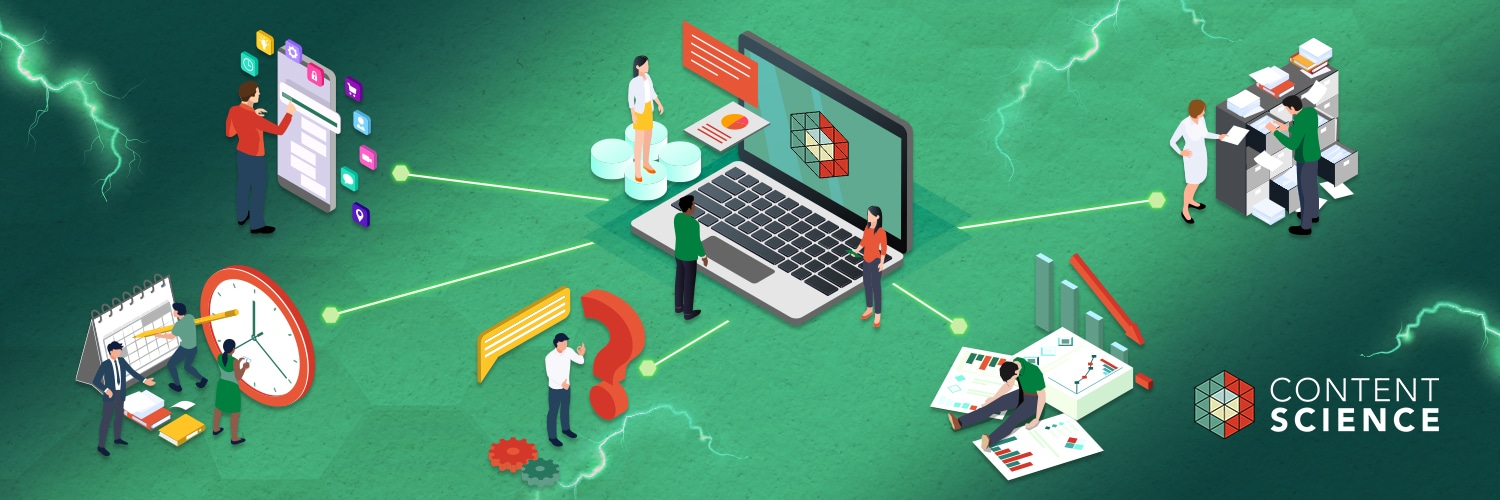
It’s been said that a picture is worth a thousand words. If this is true — and even this writer, editor and lifelong lover of long-form prose is squarely in the camp of believers — then you could argue that video and other multimedia content are worth millions.
This is especially the case in the very crowded brand journalism waters we’re collectively navigating. In late 2012, The Coca-Cola Company rebooted its corporate website — www.coca-colacompany.com — as the dynamic digital magazine Coca-Cola Journey with the simple but ambitious mission of using content to simultaneously build brand love and corporate trust .
Coca-Cola Journey makes (and sometimes breaks) Coca-Cola news, bringing to life the stories bubbling just beneath the surface of our business. We made this big bet because we believed — and still believe — that authentic stories matter, and that building a global newsroom can transform how we communicate as a company.
And our journey, pardon the pun, continues. Each day we learn from our fans, who tell us what they want to read and share, and from our peer Journey teams around the world (40 local editions of Journey are up and running, with more on the way) and fellow brand publishers who have inspired us to step up our game.
When we launched Journey, we were a big fish in a small pond. Now, we’re part of a large and growing ecosystem of brands embracing the power of content. And the digital publishing space has changed significantly over the past four and a half years, too, when you consider that the launch of Journey predated Instagram, Periscope, and Facebook Live, sponsored content, and the now standard practice of real-time marketing.
Taking into account shifting user trends and emerging technologies and tools at our fingertips, we’ve doubled down on visual storytelling — original video content , photo galleries, infographics, and more — over the past two years. Now, roughly half of the dozen pieces of content we produce and publish each week include video. This has made our stories stickier and more discoverable, significantly boosting both our site traffic and engagement on social, and helping our content spread to more readers on more platforms.
Here are a few ways we are using multimedia to make a bigger bang:
We’re humanizing our company.
Coca-Cola Journey uses video, animated GIFs, and more to champion our culture by bringing more than 700,000 Coca-Cola system employees worldwide — from senior executives to delivery drivers — to the forefront. Telling our stories through the voices of the people behind our global business brings authenticity and a personal touch to our editorial and has proven to be an effective employer-branding and internal-communications tool. This human-centric approach also resonates with consumers, especially Millennials , who increasingly associate with a company’s personality as much as its products.
We’re going behind the numbers.
Infographics have proven to be an effective way to visualize our quarterly earnings reports, analyst presentations, and other data-heavy comms. By using eye-catching charts, motion graphics, and illustrated quotes, we break down and bring to life key results and messages. These visuals — which we use to both complement written stories and as stand-alone storytelling devices — are published on Journey as downloadable PDFs and socialized on Twitter , Facebook , and LinkedIn as “bite-sized” graphics. In fact, our social engagement numbers on earnings content has more than doubled since taking this approach in late-2015.

We’re reporting in real time.
As the hub of the global Journey platform, our team covers Coke news, announcements, and events, serving as an internal newswire by syndicating stories and assets to our peers around the world for quick translation and reuse. Editorial photography and sizzle-reel videos are now key pieces of our real-time puzzle — which deliver more color and context to media than a press release ever could — and we’re starting to experiment with Facebook Live.
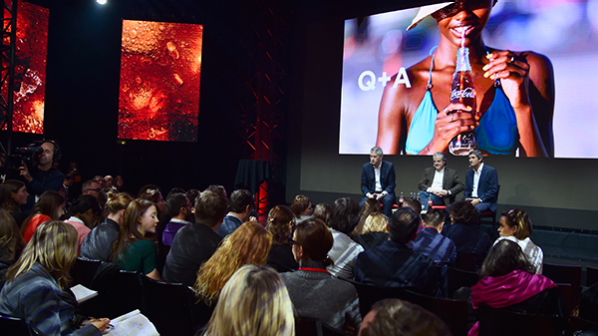
We’re showing it, not saying it.
The human brain processes images 60,000 times faster than text, which certainly explains the rise of Instagram, Snapchat, and other photo-driven platforms. As competition for eyeballs becomes more dizzying by the day, companies like Coke are leaning on visuals more than ever to break through the noise. Our Instagram handle is the LIFE magazine to Journey’s TIME, streaming both behind-the-scenes snapshots and pictorial extensions of our stories. Click-through galleries and photo narratives, meanwhile, help readers move through longer pieces. Our fans are contributing, too, by sharing pics, videos, and more through our UGC uploader — which receives up to 100 organic submissions per month.
We’re making our stories more shareable.
Taking cues from BuzzFeed and other social-driven publishers, we’ve fully embraced the power of the photo-heavy, copy-light “listicle.” We also edit longer, documentary-style Journey videos to embed natively on Facebook , with text overlays for volume-off scrollers.
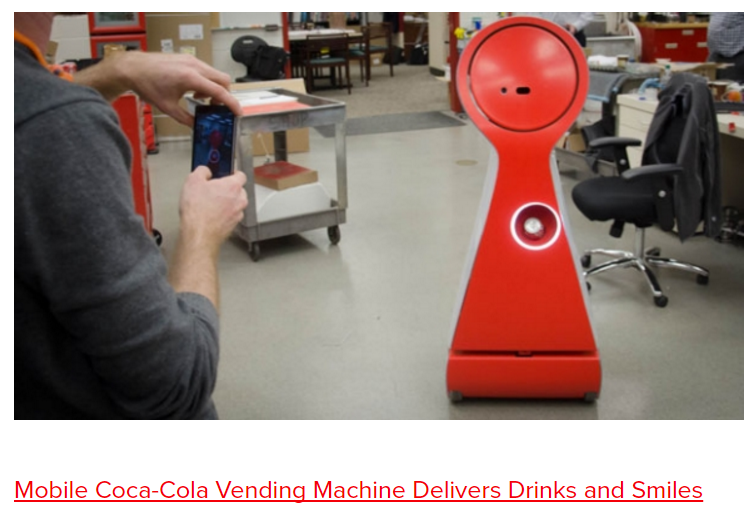
We’re embracing our past with an eye on the future.
As the 130-year-old company behind one of the world’s most beloved brands, we’re fortunate to have a deep reservoir of stories to share … and reshare. Video packages celebrating our rich heritage are among our top performers, as are pieces that balance nostalgia and innovation — and hint at both where we’ve been and where we’re headed.
We’re bringing value to our customers and NGO partners.
From the Olympic Games to World Wildlife Fund (WWF), we use multimedia storytelling to amplify our marketing and sponsorship assets, showcase our sustainability programs and partnerships, and strengthen relationships with our retail and food-service customers.

By fortifying our content with video and other visuals, we’re able to extend our reach — and our shelf life — and, hopefully, build the Coca-Cola business through our unique brand of brand journalism. And while magazine-style feature articles will likely always be the bedrock of our editorial, it’s safe to say that as our journey (pardon the pun) continues, we will continue to find fresh new ways to use multimedia to tell the Coca-Cola stories that matter.

Jay Moye is global editor-in-chief of Coca-Cola Journey. He leads editorial for the company’s award-winning digital magazine and companion blog, Coca-Cola Unbottled. The global Coca-Cola Journey network now includes 36 local editions spanning 49 countries. Follow Jay on Twitter @JayMoye1 .
What to Check Out Next
- What Is Brand Journalism?
- Content Marketing Fact Sheet
- Content Effectiveness
- Content Strategy
- Search Engine Optimization
- Social Media + Email + Mobile + Chat
- Customer + User Experience
We invite you to share your perspective in a constructive way. To comment, please sign in or register. Our moderating team will review all comments and may edit them for clarity. Our team also may delete comments that are off-topic or disrespectful. All postings become the property of Content Science Review.
Events, Resources, + More
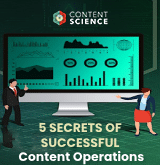
5 Secrets of Content Ops Success: Webinar
Learn how the most successful organizations scale and mature content operations. Based on our research with 700+ content leaders and professionals.

The Ultimate Guide to End-to-End Content
Discover why + how an end-to-end approach is critical in the age of AI with this comprehensive white paper.

The Content Advantage Book
Learn more about the much-anticipated third edition of the highly rated book by Colleen Jones. Preorder the electronic version.

20 Signs of a Content Problem in a High-Stakes Initiative
Use this white paper to diagnose the problem so you can achieve the right solution faster.
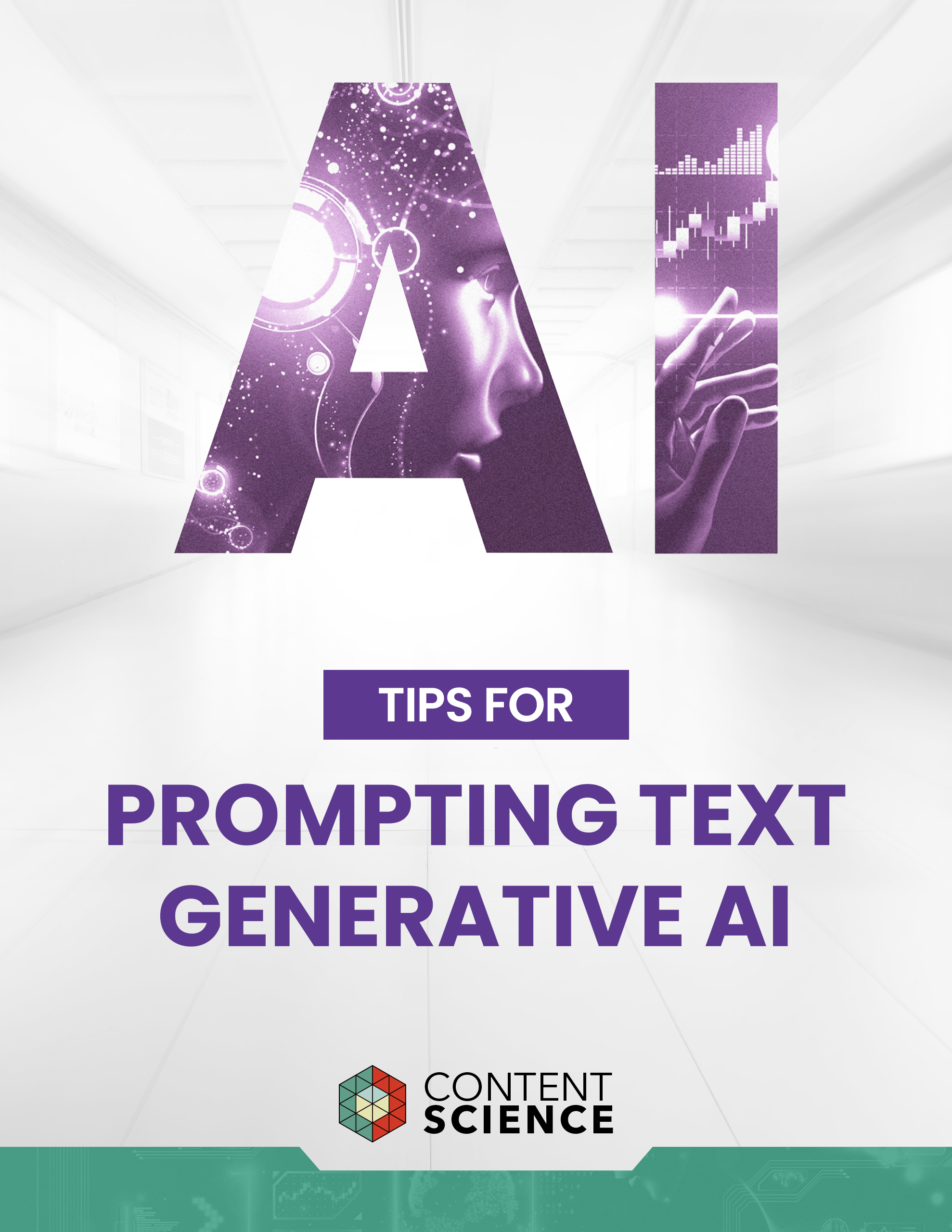
Course: Prompting Text Generative AI
Learn how to bring out the full potential of text generative AI to create impactful content from this on-demand course.

Upskill with Content Science Academy
Training for modern content roles through on-demand certifications + courses or live workshops.
You’ve reached the article limit. Please login or register to continue.
Username or Email Address
Remember Me
Coke on Creating Brand Love Through Storytelling
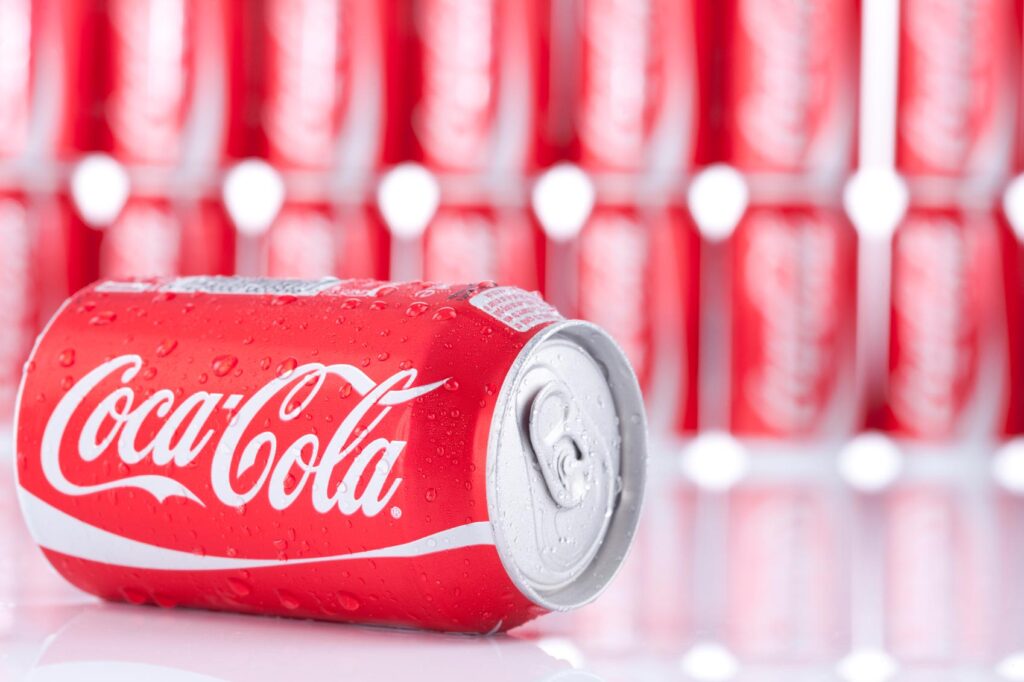
It’s tough to have a conversation about brand journalism—or brand storytelling—without mentioning Coca-Cola Journey , the cola company’s global content hub.
According to Jay Moye, the digital magazine’s editor-in-chief, Coca-Cola Journey is a destination for smart, fun insightful content. The site tells Coca-Cola’s story through quality journalism. (Turns out having a journalism degree while working for a content marketing agency isn’t useless after all.)
Learning about content marketing strategy from @JayMoye1 and an iconic brand. #CokeJourney #ContentPlus pic.twitter.com/sZ2z9HXnEP — Matt McKinney (@MattMcKNC) September 24, 2015
The site features behind-the-scenes stories and articles that celebrate Coca-Cola’s past, present and future. The team of seasoned writers produces 12 to 15 pieces of original content every week, covering food, culture, style, sports and well-being, as well as innovation, careers and corporate initiatives at Coca-Cola. Site writers craft feature stories of between 500 and 1,500 words, which are usually paired with large hero images or graphics. Journey’s mission, Moye says, is threefold:
- To deliver content that makes a difference for the business;
- To build brand love and corporate trust;
- And to lead the conversation.
“Our responsibly is to consistently rethink how we communicate about our company,” Moye says. The Journey staff uses data to fuel its editorial calendar, and social media to power their message. The content site is a rebranding of Journey , a popular, photo-heavy internal tabloid-sized publication for employees and stakeholders in the 1980s. Considered ahead of its time, the site was resurrected in 2012. Since then, Coca-Cola Journey has been not only the company’s publishing arm but also the landing page of coca-colacompany.com. It’s been viewed nearly 102 million times, and receives roughly 1.5 million visitors monthly. About 75 per cent of Coca-Cola Journey’s content connects back to the company’s products. So how does Journey find these great stories?
They Bring Coca-Cola’s Milestones to Life
Take the 100th anniversary of the Coke bottle, Moye says. Coke turned a single-day event into a yearlong campaign, and Coca-Cola Journey featured a story about sea glass highlighting the bottle’s unique attractiveness to sea glass collectors.
They Tap Into Pop Culture
The Journey story “Grateful Red” — which Moye, a graduate of the University of North Carolina at Chapel Hill’s journalism school, wrote — chronicled the unlikely connection between the Grateful Dead and Coca-Cola . The Dead used a former Coca-Cola building in Novato, California, as its headquarters there until 2003.
They Put the Human Story Into Human Resources
The 2015 #ShareACoke campaign played a role in one employee’s marriage proposal . #ShareACoke also inspired some craziness here @pacecomm , too, thanks to me .
Happy Monday @PaceComm #day8 #ShareaCoke pic.twitter.com/Jfj1ZlN9hK — Susan E Stegemann (@Susanesny) August 10, 2015

They Let User-Generated Content Play Its Part
Journey knows the value of user-generated content, and puts it front and center. Check out the snapshot gallery of images posted across web by Coke fanatics. And let’s be honest: there’s nothing cooler than seeing your #ShareACoke selfie featured on the Coca-Cola Journey website!
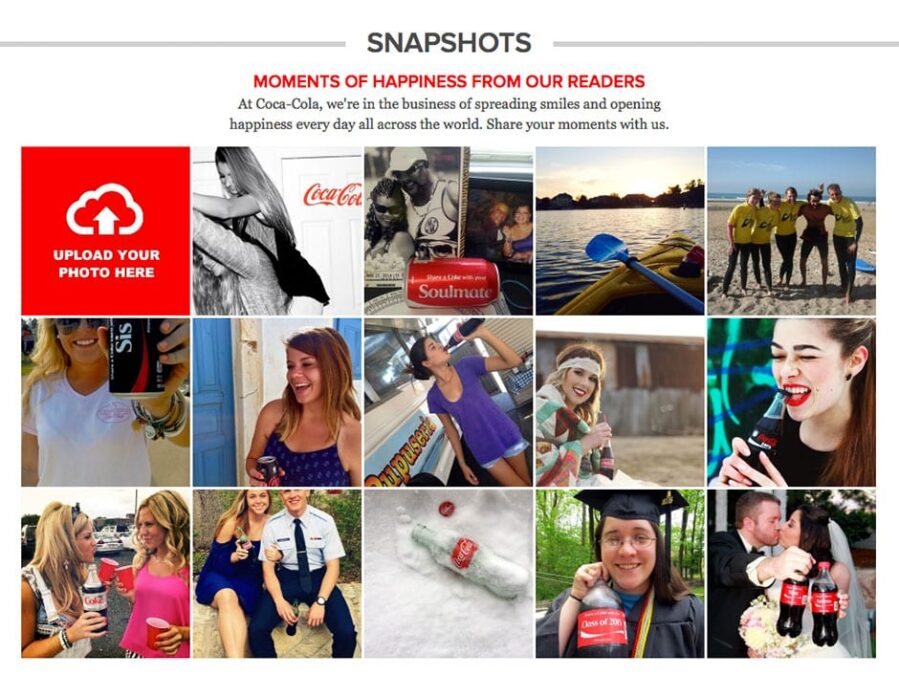
They Use Video in Nontraditional Ways
Journey uses video to tell the stories that aren’t being told through traditional marketing channels, Moye says. He shared, as one example, a video of business magnate Warren Buffett serenading a glass-bottle Coke . (Hilarious!)
They Spotlight Internal Talent
Artist Steve Penley has an interesting success story.
They Use Infographics to Feature Corporate Initiatives
Nothing makes numbers easier to digest than an infographic , like this one:
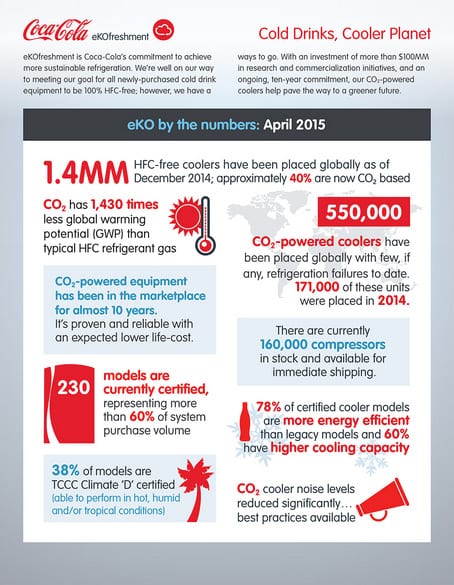
But Journey also does not rest on an if-you-build-it-they-will-come digital strategy. Journey keeps abreast of trending topics and popular conversations across social platforms and uses these insights to either refresh previously produced assets or create something new. And they use advertisements and paid social media posts to spread the word about their content.
Telling the right story at the right time is Journey’s formula for success. That’s the moment when “great content mashes up with a real-time event,” Moye says, as he cites the series finale of Mad Men as an example. The last moments of the final episode tapped into Coke’s popular “I’d like to buy the world a Coke…” 1970s spot, known around the world. In the days leading up to the finale, as there was buzz about Coke’s possible role in Mad Men’s final storyline, the Journey staff found itself dusting off a 2012 story about the making of that commercial to appease organic Internet searches. Meanwhile, it began crafting complementary content to accompany the older piece, to be revealed not a moment sooner than it was blessed for them to do so.
For Journey, there isn’t a straight line from content to product sales. Instead, their return on investment is based on a proprietary expressions of interest. Every piece of content Journey creates is measured this way—essentially a mix of page views, social shares, organic searches and other performance metrics.
The Mad Men package resulted in 170,000 visits to the Journey site. Is there any doubting the brand love there?
Sign up for our monthly newsletter to get more content like this.
More reading.

What’s the Difference? Comparing Google Analytics and Adobe SiteCatalyst
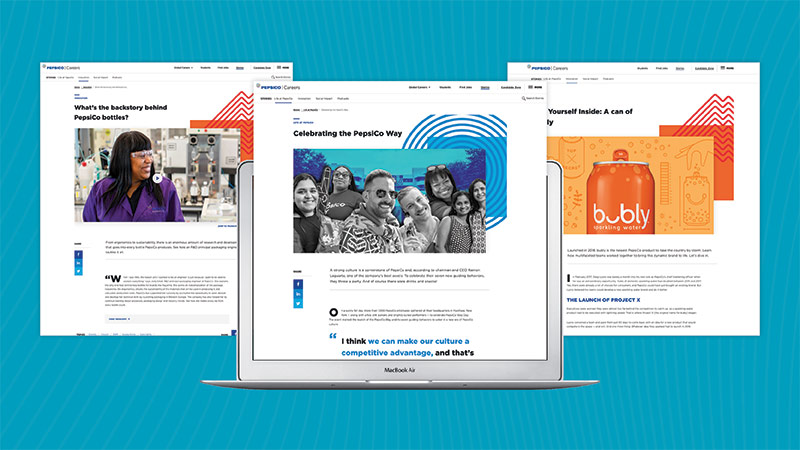
For the Employee, With the Employee and By the Employee: How a CPG leader maximizes employee brand storytelling to recruit the best and brightest tech talent

Using AI in Content Marketing: 6 Dos and Don'ts
Coca-Cola: The people-first story of a digital transformation
There is a widely reported war for talent across industries and sectors, with no slowdown in demand. McKinsey GIobal Institute research estimates that one in every 16 workers will need to transition to new roles by 2030 —a 25 percent increase compared with prepandemic predictions—to support increased demand for all things digital.
Global consumer goods company Coca-Cola has established a digital academy to upskill managers and frontline team leaders across its business operations. In its first year, the academy trained more than 500 people in digital skills using a combination of go-and-see visits, immersive boot camps, and e-learning modules. Graduates of the academy have implemented about 20 digital, automation, and analytics approaches at ten-plus sites in the company’s manufacturing network, boosting productivity and throughput by more than 20 percent. Digital-skills training is now being rolled out to about 4,000 employees across the organization.
In this episode of McKinsey Talks Operations , Daphne Luchtenberg is joined by Iain McLaughlin and Gigy Philip, vice president of commercial product supply and transformation director, respectively, at the Coca-Cola Company. Roberto Migliorini, a partner in McKinsey’s Operations Practice, provides his insight on the need for digital transformation and the skill building required to deliver it. The following is an edited version of their conversation.
Daphne Luchtenberg: Your company’s future success demands agile, flexible, and resilient operations. I’m your host, Daphne Luchtenberg, and you’re listening to McKinsey Talks Operations , a podcast where the world’s C-suite leaders and McKinsey experts cut through the noise and uncover how to create a new operational reality.
It seems increasingly clear that there is a labor mismatch across industries and sectors. And as with key frontline sectors such as truck drivers and line operators, there is a marked gap in the digital talent available—only 1 percent of supply chain leaders report having sufficient talent in-house to support their increased digitization, down from 10 percent in 2020. The pioneers of the Fourth Industrial Revolution have learned that human capabilities are critical when organizations wish to adopt advanced digital technologies successfully. For example, Coca-Cola, our guests here today on McKinsey Talks Operations , has established a digital academy to upskill managers and frontline team leaders across their business operations.
I’m delighted to be joined today by Iain McLaughlin, VP of commercial product supply, and Gigy Philip, transformation director, both from the Coca-Cola Company. I’m also joined by Roberto Migliorini, a partner in McKinsey’s Operations Practice. Welcome.
Iain McLaughlin: Thank you.
Roberto Migliorini: Pleasure to be here.
Gigy Philip: Thank you.
Daphne Luchtenberg: Roberto, can I turn to you first to help sketch out the context a bit more? We know that supply chain disruption is a topic of the day, and we’ve heard much about digital and analytics and how they can drive resilience building and performance in operations. Learnings are constantly building. What’s the latest thinking in this area?
Roberto Migliorini: Yes, Daphne. Supply chain disruption is definitely the topic of the day, or we can say of the last two years, and it seems that disruptions are building on each other. What we see today is a crazy inflationary environment with a lot of pressure on input, cost, and macroeconomic volatility, as well as a lot of political uncertainty. And this builds on a situation that was already pretty difficult from a supply chain standpoint, that is, the post-COVID reality, with significant shifts in consumer behaviors, labor shortages, and overall supply chain disruption in logistics and global freight. So, digital and analytics are becoming more and more important for the organization to be able to take on such a difficult period, and we think that they will become even more important in the future.
We know that more than 90 percent of the supply chain leaders surveyed by McKinsey cannot keep up with today’s elevated demand, because of supply chain disruption. And we know that disruption is happening on average every 3.7 years with a month worth of disruption that can really impact almost the full year’s EBIT. So we do see that embarking on a digital-transformation journey is now becoming extremely important for the supply chain organization to survive in this very difficult period.
Embarking on a digital-transformation journey is now becoming extremely important for the supply chain organization to survive in this very difficult period. Roberto Migliorini
Daphne Luchtenberg: And Iain, how has a global organization such as Coca-Cola been thinking about the adoption of digital and analytics to accommodate the supply chain challenges?
Iain McLaughlin: Well, just a word about what we do: commercial products supply manufactures and distributes concentrate and beverage base, and that is the fundamental ingredient that we make our finished beverages from. We operate from 18 plants, literally all over the world, and we ship to about 1,000 locations of our bottling partners in 170 countries. So, clearly, the height of our concern at the moment is continuity of supply. If we don’t ship concentrate and beverage base to our bottling partners, we can’t produce the finished product. And you can imagine that even in good times, when the supply chain is consistent and predictable, it is challenging to manage this operation. So, in the current environment, it’s extremely challenging indeed, with very, very high levels of volatility. But we are actively using digital and analytics in many ways to help us through the current disruption that we’re facing.
Subscribe to the McKinsey Talks Operations podcast
One of the things that has been most helpful to us is that early in 2021, we built a digital twin of our manufacturing network to support business continuity planning, as well as network optimization. Previously, we had relied on experience, we had relied on know-how within the organization in order to do business continuity planning. But by digitizing it, we actually brought all of the data together into a single model, which has helped us enormously in reacting to situations during the pandemic.
As you can imagine, we’ve had to react to ingredient shortages, border closures, and various other disruptions. And the good thing about the model is that it takes the human bias out of the analytics and the decision making, and it has really opened our mind to possibilities for continuity of supply that we had never considered before. So, I think really relying on data and analytics [to support business continuity planning] has been a tremendous benefit to us and the organization.
Daphne Luchtenberg: That’s fantastic. And Iain, of course speed is of the essence in those scenarios that you’ve sketched out. So I imagine that’s another dimension that this technology has brought to you.
Iain McLaughlin: Yes, absolutely. I think given that we are in a very short cycle from supply of concentrate to actually being present in the market with the finished product, it’s very important for us to react quickly. And I would say that analytics and the capability of the digital twin have helped us do that with ingredients supply. We’ve been able to see where the hot spots are and react much more quickly, and with a greater degree of accuracy, to make sure we have the ingredients we need, where we need them.
Daphne Luchtenberg: Fantastic. Roberto, we’ve often talked about pilot purgatory, and certainly [its impact] when it comes to embedding these kinds of transformations. Can you talk more about how a phenomenon like pilot purgatory can hold a company back?
Roberto Migliorini: Absolutely. We had the opportunity to work with the World Economic Forum on reviewing more than 10,000 plant sites across the globe that were trying to achieve a difference in performance, thanks to Industry 4.0. And what we have discovered is that many companies have been successful in driving successful pilots. However, the main challenge was, how do you scale these pilots across the different lines in a plant, across the different plants in the organization, to achieve the significant impact that is vital for the business?
Daphne Luchtenberg: Yes. And Iain, just to come back to you, did you kind of hit a moment where there was a bit of pilot purgatory when you were first embedding the adoption of this technology?
Iain McLaughlin: Fortunately, no. And the reason is that we did a lot of research and prework to understand the potential impact of Industry 4.0, and we did that as part of our overall planning for the transformation. So we were aware of the pitfalls of pilot purgatory. But pilots are still important, right? You have to understand if there’s value, where the value is, and how you can capture that value. Pilots have an important role to play, and we did one. There was a significant pilot at our largest facility in Ireland. But having done that, and having seen the fact that there was tremendous value to be captured, what we then did was take time out to plan the strategy. So we always started from a viewpoint that we were taking this across the network. Therefore, by the time we started executing the strategy, we already knew we were going to multiple sites. And that has really helped us to move at speed and scale. So, pilots are important, I’m not dismissing them. But pilots for the sake of pilots are not going to get you the transformation that you might be looking for.
Daphne Luchtenberg: Yes, that’s super helpful. And Gigy, I’d like to bring you in as the transformation director who has been instrumental in making some of these things a success. I understand that the digital academy that you built really helped to avoid the purgatory trap and to help with the transformation and the dissemination of the plans and getting everyone to buy in. Can you talk a little bit about how you went about setting up the digital academy to support this transformation?
Gigy Philip: We worked with a team of experts to build the framework for the digital academy and launched it in July of last year. Our digital academy is designed really to build foundational knowledge and skills on core digital, analytics, and agile topics so that our associates can be successful operating in a digital world. All of our 3,000-odd employees across CPS [commercial product supply] will be participating in the academy. In terms of the design mechanics, we grouped all the roles within the organization into six cohorts based on learning needs and used a very structured approach to develop customized learning journeys for each of the cohorts. Across the six learning journeys, we developed 25 unique modules, covering three major areas. The first area is around creating awareness and excitement. The second is around transformation skills, and the third is around digital and analytics skills.
Everyone in CPS will be participating in four basic modules. First is the transformation kickoff presentation, followed by an e-learning digital-explorer module, then training around data and analytics and new ways of working—about 15 hours of training in total. Then, depending on their role, [participants] will undertake further training in modules that have been tailored for their cohorts. Typically, associates start their learning journey about a month before deployment of key digital-transformation initiatives in their operation. So, in essence, our associates are taking quite a staggered start to their learning journey. By the time all of our associates go through and complete their learning journeys, we estimate that we will have run over 7,000 training events and completed over 60,000 hours of training.
Daphne Luchtenberg: Amazing. Yes, Iain.
Iain McLaughlin: It’s the single-biggest investment we’ve ever made in training. And the reality is we have a phenomenally engaged team in CPS that really is a huge asset to the business. So to bring them on the journey and maintain the current high levels of engagement that we have was incredibly important to us. And we see the investment in the digital academy as being instrumental in building the skills of the team.
Daphne Luchtenberg: Yes, I can see how that worked. And these levels of engagement are just amazing to see. Gigy, how did the organization strike the balance between building the skills of the existing cohort and bringing in expertise to actually drive knowledge transfer?
Gigy Philip: The broad range of digital technologies that we’re seeking to adopt as part of the transformation will fundamentally change the way we work. So a significant number of existing roles in CPS will require new knowledge and new skills. And several new roles with competencies that we don’t currently have will also need to be created. So, we’re seeking to bridge the skills gap and deliver the workforce diversity that’s needed to tackle the challenges ahead, primarily through reskilling and through the digital academy initiative.
This decision is really not only driven by the current talent shortage that is making it very, very difficult to hire new talent but also by the reskilling, which contributes to the learning culture that we’re trying to build in the organization, and this culture of continuous learning can pay dividends on the employee front. And reskilling also makes financial sense because it’s obviously cheaper to reskill current employees than to hire new ones. So, the primary focus is on reskilling, but we’re also bringing in new talent with skills that we need for the future that we don’t currently have.
We’re seeking to bridge the skills gap and deliver the workforce diversity that’s needed to tackle the challenges ahead. Gigy Philip
Iain McLaughlin: A great example of that would be data scientists. The organization never had data scientists, because we weren’t looking at data across the network. We were looking at analytics and metrics at an individual plant level. But what we’re finding is that by really looking at the data in a different way, at the people with the real skills, we’re driving considerable value. So this is working very well to drive the transformation.
Daphne Luchtenberg: You’re well down the road in this transformation journey, and your people are coming with you. It sounds like you had a fantastic, robust plan at the outset. Is there anything that surprised you in what you’ve learned? Gigy, I’ll ask you first.
Gigy Philip: I’m not sure that there’s been anything really surprising. I think our key learning has been that [the workforce is] delivering a holistic tech-enabled transformation that requires a number of building blocks. And these include having a very clear road map, as well as a clear change story that needs to be cascaded through the organization. The second building block is around talent. We spoke about the reskilling process and bringing in talent with skills that we need for the future, but having a structured program in terms of building skills throughout the whole organization is also important. The third building block is around an agile delivery methodology—how do you bring the new ways of working into the organization very quickly and have this very fast-paced iterative process that’s very focused on value?
And then, there is the building block on technology. We need to bring in new technology to ensure that we are maximizing the business impact of the transformation. Iain spoke about data and analytics. Data and analytics are going to become key in terms of future performance. Organizing the data and structuring it so that we can actually do higher-end analytics is also a fundamental building block in terms of the transformation. And then the last piece is around having a very structured process in terms of adopting and scaling the use cases across the organization. So, how do you build systems, processes, as well as tools and the whole change management principles and incorporate that into the process? Having these six building blocks has been a key learning for us.
Daphne Luchtenberg: Got it. Thanks for sharing. It’s a really helpful framework. Roberto, what do you find are some of best practices in the industry on these big transformation programs?
Roberto Migliorini: It was very interesting to hear from Gigy, because I can really see, in this transformation, some of the best practices that we see from the leading companies that are managing to successfully drive impact. And one aspect that we keep seeing is that technology is hard, but it is the easiest part in the transformation. The transformation [of people] is indeed the [hardest part of the] transformation.
As such, it’s important that you prepare the organization around what is the change story, what is the reason you’re after, as well as how do you equip the whole organization, how do you build the capability to go after. And so, you actually move thousands and thousands of people with you. What we have seen as the secret recipe in these tech-enabled transformations is the focus on the transformation together with an agile approach to technology. The second aspect on agile approach to technology is fundamental in order to make the ROI work over the transformation, so you don’t get stuck in a multiyear investment without seeing the impact.
Iain McLaughlin: One of my best surprises has been just how willing people have been to adopt new methods and new technologies. We come from a very established business that was reliant on legacy technology. And some of that legacy technology made it difficult to get things done. And we saw that in our regular engagement surveys. Actually improving the technology, making people’s lives easier, making it easier to connect and get things done has had a fantastic impact in those sites where we’ve implemented the technology. So, I wouldn’t underestimate the willingness or indeed the hunger for frontline workers to change this kind of transformation. We found that to be one of our key strengths.
Daphne Luchtenberg: Iain, I imagine that you were able to involve them in shaping the change too, right?
Iain McLaughlin: Absolutely, in shaping the change, in executing the change. And one of the nice things I have experienced is demonstrating the change. Finally, after two years of operation, we were able to inaugurate our newest plant in the network in Costa Rica. For me, to see our frontline workers talk directly about how they’re using the technology and how that’s improving what we do was incredible. I mean, so exciting, so energizing.
Daphne Luchtenberg: So what were some of the other impacts on operations in terms of performance and improvement? And Gigy, I was going to ask you, what are some of the real results you’ve seen from the transformation so far?
Gigy Philip: In terms of the manufacturing space, we are seeing an improvement in productivity between ten and 20 percentage points. Across the supply chain, there is an improvement in terms of service levels and reduction in terms of obsolescence and write-ups.
Daphne Luchtenberg: Right. And you must have also made some lasting changes to the operating model, to how the teams are interacting together as well.
Iain McLaughlin: At Coca-Cola, we’re on a journey to become a networked organization. And we have used our transformation as a way to turbocharge that within CPS. We’ve always worked globally because our manufacturing plants are codependent. Sometimes we have to help other plants react to crises. But we’ve really used the technology in a way such that we have many of the plants in the network working together to solve problems. Also, when we design solutions, we design them at scale so that we can take those across the network, as opposed to the teams in one plant building solutions for that plant. In Singapore, we’ve seen a production join tool built that is now being scaled across the world. In Costa Rica, we’ve seen a prior-to-use app, which is really helping in terms of quality, [that was] built in Costa Rica but now being rolled out across the world. So, I think it really gives you the opportunity to work at scale and as a network, and that is one of the key benefits that we are seeing.
When we design solutions, we design them at scale so that we can take those across the network, as opposed to the teams in one plant building solutions for that plant. Iain McLaughlin
Daphne Luchtenberg: Roberto, where have you seen things go wrong when those operating models are not in sync?
Roberto Migliorini: What we have seen working with several companies is two extremes. One, when the approach is too centralized, especially with a big focus on tech, engineering, and IT. And the opposite side is when there is a decision to leave each plant driving the transformation on its own. In the first instance, what we see is the development of an amazing application from an engineering and technology perspective, but no pull from the sides, no pull from the operation. So, the issue is, if you have an amazing app that no one’s going to use, the impact is not going to happen.
On the opposite side, what we have seen is that a company went on with giving a lot of freedom to each plant to develop their own solutions with very limited coordination. While this brings some impact, what we’ve seen is that you leave two main aspects on the table. One is synergies, in terms of investment and cost of developing new solutions. And the second one is the sharing of best practices. As you can imagine, not all of the plants can use the best ideas from the whole application. So you definitely achieve better results when you use the brain of everybody in the organization for each solution.
Daphne Luchtenberg: That’s great. Iain, you talked about the fantastic engagements that you’ve had right across the organization. And I’m curious, was that the same at all levels of the organization? And how did you make sure that the senior leaders were also along the journey and perhaps also had to transform a little bit? How did that work?
Iain McLaughlin: That’s a very interesting question. I would say that, in the beginning, we had a spectrum of commitment, let’s call it that. Some who were early adopters and some who were laggards. But we felt that if we were investing in building the capability, then everyone had to invest in themselves and in building the capability for the organization. So, as a leadership team, we all went through digital fundamentals, for example, so that we understood how we could frame it and think about it from our own perspective, but also how we could have the appropriate, consistent conversations with our team. There is an excitement and commitment at all levels of the organization to prepare and adopt the change.
Daphne Luchtenberg: And Gigy?
Gigy Philip: In terms of the learning journeys, we engaged associates at all levels, from the very early stages of the design phase of the digital academy. And this engagement included many hours of interviews. So we interviewed the extended leadership team. We also interviewed associates at all the different levels of the organization. I think these sets of interviews helped us to identify the training requirements, and it gave us great input into what was required to develop the training content. From the onset, our aim was to create a very fun, experiential learning journey for associates at all levels of the organization, and I think we have met this ambition.
Daphne Luchtenberg: And everybody rolled up their sleeves, didn’t they?
Gigy Philip: Absolutely. As they got into the learning journey, I think they wanted more. We haven’t had any pushback, per se. All of the feedback that we’ve had to date has been very positive. The only push that we’ve had so far is for us to actually accelerate the rollout of content and the training, which is a very positive sign.
Daphne Luchtenberg: I love it. Well, it sounds like a great success story and a great journey, but there’s still a long way to go and much more to achieve. So, thank you for sharing that with us. Roberto, I wanted to ask you what is your final thought, as we’ve been listening to this conversation, for our listeners out there who are in organizations who are considering this type of big digital-transformation program?
Roberto Migliorini: I think we’ve touched on many interesting points and some recommendations throughout this podcast. But one point that is worth mentioning is the desire and the commitment of the leadership at the beginning to make this work. Because it’s not an easy journey, and it needs commitment and conviction across the whole organization. And what we see is that these journeys require, at the beginning, a big push from the top management to happen, and to happen successfully.
Daphne Luchtenberg: And Iain, what advice would you give to a peer at your level embarking on this? How brave do they need to be?
Iain McLaughlin: I would say, undoubtedly, that you have to be brave. If we embarked on this during the pandemic, traditionally, we would have been in the plants working with the teams on the front line. Instead, we did it all virtually. So I would say these things don’t work based on incrementality. Be bold, take the time to develop a holistic strategy for the transformation, and engage the team in that, because ultimately, you’re dependent on the team to execute it. It can’t be executed from a central function. And then of course, make sure your metrics are in place, and course-correct where you have to. You’re not going to get it perfect the first time. But if you’re not bold in the beginning, you run the risk of ending up in pilot purgatory. So, know where you’re going, is what I would say.
Daphne Luchtenberg: Sounds good. Well, Gigy, what would be a final word from you?
Gigy Philip: I support everything that both Roberto and Iain have said. The key piece here is to be bold. We won’t have all the answers. We didn’t have all the answers as we embarked on this transformation process. We learned along the way, and continue to learn along the way, and continue to adjust and adapt our transformation program as we move through this process.
Daphne Luchtenberg: Thanks so much for those final thoughts. Your experience is truly inspirational. And I hope that many of our listeners will have taken heart from the successes that you’ve reaped so far. Thank you, Iain, Gigy, and Roberto for being with us today.
Roberto Migliorini: Thank you.
Iain McLaughlin: It’s been our pleasure. Thank you very much.
Gigy Philip: Thank you very much.
Daphne Luchtenberg: You’ve been listening to McKinsey Talks Operations with me, Daphne Luchtenberg. If you like what you’ve heard, subscribe to our show on Apple Podcasts, Spotify, or wherever you listen. We’ll be back with a brand-new episode in a couple of weeks.
Iain McLaughlin is vice president of commercial product supply, and Gigy Philip is transformation director, both for the Coca-Cola Company. Daphne Luchtenberg is a director of reach and engagement in McKinsey’s London office, where Roberto Migliorini is a partner.
Explore a career with us
Related articles.

Digital transformation on the CEO agenda

A digital path to sustainability
- Our company
- Sustainability
- Social impact
years of refreshing the world
The Coca‑Cola Company has been refreshing the world and making a difference for over 138 years. Explore our Purpose & Vision, History and more.
- Purpose & Company Vision
- The Coca‑Cola System
- Our Board of Directors
- COCA-COLA HISTORY
- Our Origins
- Our First Bottle
- Sustainability History
- Advertising History
brands worldwide
We've established a portfolio of drinks that are best positioned to grow in an ever-changing marketplace.
From trademark Coca‑Cola to Sports, Juice & Dairy Drinks, Alcohol Ready-to-Drink Beverages and more, discover some of our most popular brands in North America and from around the world.
- Coca‑Cola
- + View More
- COFFEE & TEA
- Costa Coffee
- Gold Peak Tea
- JUICES & DAIRY
- Minute Maid
- Fresca Mixed
- Jack Daniel's & Coca‑Cola
- Simply Spiked
- Topo Chico Hard Seltzer
OUR PLANET MATTERS
Our purpose is to refresh the world and make a difference. See how our company and system employees make this possible every day and learn more about our areas of focus in sustainability.
- 2030 Water Strategy Key Goals
- Agriculture
- Principles for Sustainable Agriculture (PSAs)
- Collection Strategy
- Packaging Design
- Partnership
- In Our Products
- Sugar Reduction
- 2023 Environmental Update
- 2022 Business & Sustainability Report
- Sustainability & Governance Resource Center
PEOPLE MATTER
We aim to improve people's lives, from our employees to those who touch our business to the many communities we call home.
- Diversity, Equity and Inclusion
- Leadership Council
- Employee Groups
- People & Communities
- Women Empowerment
- Project Last Mile
- HUMAN RIGHTS
- Human Rights Governance
- Stories of IMPACT
- Sports & Entertainment
- Paris 2024 Hub
- Coca‑Cola Foundation
- Partnerships
- Supplier Diversity
We believe working at The Coca‑Cola Company is an opportunity to build a meaningful career while helping us make a real difference on a global scale.
- LIFE AT COCA-COLA
- Career Development
- Work With Us
- CAREER AREAS
- Early Career
- Experienced Professionals
- Accessible Workplace
- HIRING PROCESS
- Application Process
- Coca‑Cola Company Jobs
- Coca‑Cola System Jobs
GET THE LATEST
Catch up on the latest Coca‑Cola news from around the globe - from exciting brand innovation to the latest sustainability projects.
- WHAT OTHERS ARE READING
- Taste the Transformation: Coca‑Cola and Grammy-Award Winning Artist Rosalía Break Boundaries With Limited-Edition Coke Creation
- Coca‑Cola Brings Together Iconic Andy Warhol Painting with Illustrious Roster of Master Classics and Contemporary Works in New Global 'Masterpiece' Campaign
- A Deeper Look at Coca‑Cola's Emerging Business in Alcohol
- LATEST ARTICLES
- Coca‑Cola Zero Sugar Invites Fans to #TakeATaste
Simply Mixology Raises the Bar of the At-Home Mocktail and Cocktail Experience
- Sprite, Fresca and Seagram's Tap Mark Ronson and Madlib to Create a 'Clear' Connection
- View all news
SUSTAINABILITY
.jpg)
As a total beverage company, we are driven by our purpose to refresh the world and make a difference. We grow our business in ways that drive positive change and aim to build a more sustainable future for our planet.
Our Sustainability Progress
See our latest updates in the areas of water, packaging, climate and agriculture.
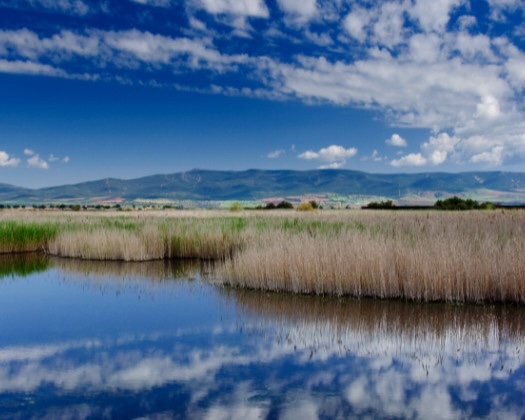
Giving people options and choices
From sparkling water to dairy, to refreshing soft drinks and natural juice, we offer over 200 brands worldwide, including reduced-sugar drinks and smaller packages.
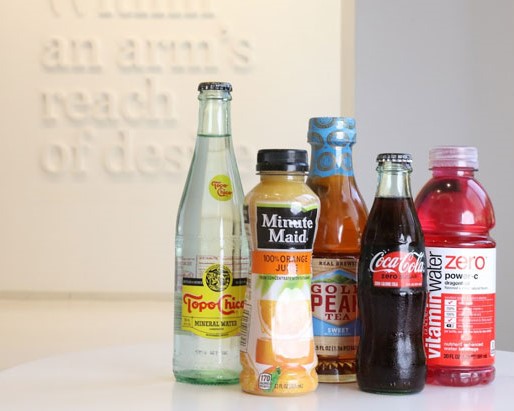
Focusing on a World Without Waste
We aim to collect and recycle a bottle or can for every one we sell and make 100% of our packaging recyclable.
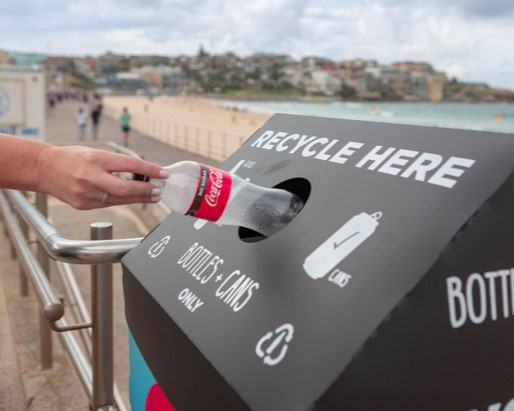
Prioritizing water replenishment
Our water stewardship initiatives are aimed at increasing water security where we operate, source ingredients and touch people's lives. Since 2015, we returned to nature and communities 100% of the water used in our finished beverages globally.
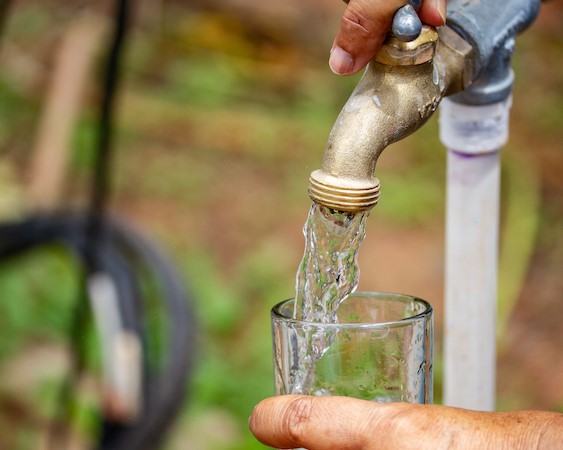
Reducing our carbon footprint
We set a target to reduce our carbon emissions 25% by 2030 from a 2015 base year.

Our Areas of Focus
- Water Stewardship
Water balance is giving back to nature and communities. We go beyond to improve water security where it's needed most.
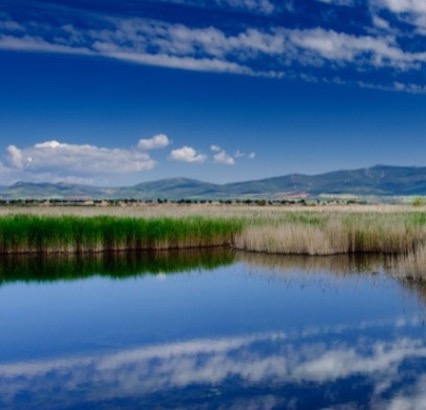
We provide high-quality products and cutting edge ingredients sourced sustainably and ethically.
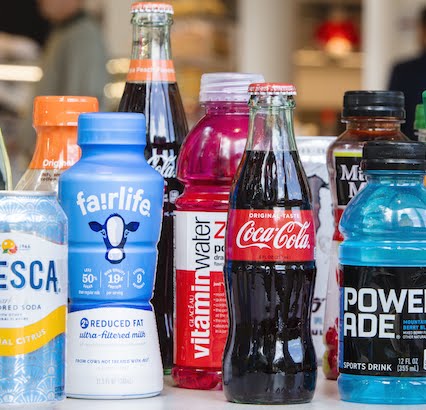
Thriving farmers and farming communities are critically important for our supply chain. Our ability to deliver quality products depends on having a sustainable and secure supply of agricultural ingredients.
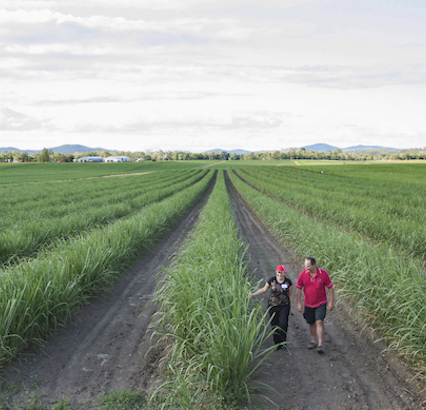
- Climate Solutions
We believe we have a responsibility to contribute solutions by reducing our own emissions plus building resilience through businesses and communities to adapt to climate change.

- Product Quality & Safety
Quality, food safety and regulatory compliance are cornerstones of our dedication to perfect product, trusted everywhere.
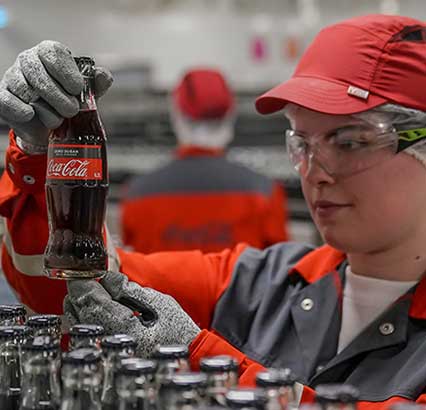
Our goal is to recover every bottle or can that is sold to recycle and reuse, no matter the size, shape or material.

Our Sustainability Priorities
As a foundational step in how we conduct business and develop our corporate strategy, our company focuses on the highest-priority sustainability areas where we can help make a difference. It is also foundational to how we evolve and report on our business and our sustainability efforts.
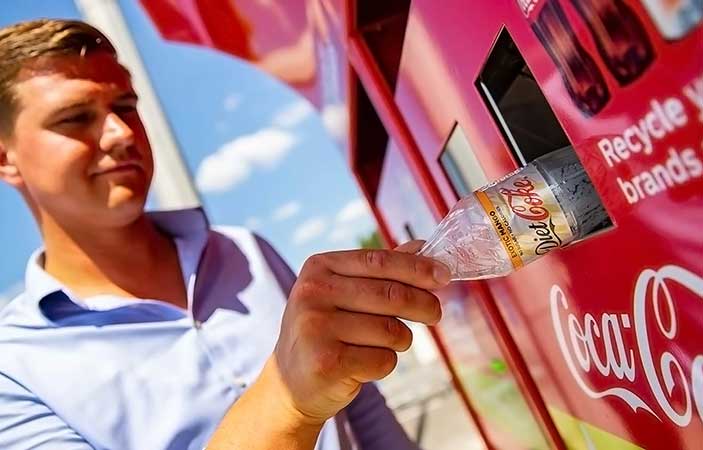
Related Content

DASANI and Sprite Boost Sustainability Packaging Credentials in North America
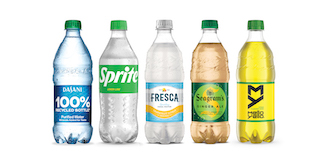
A Deeper Look at Coca‑Colas Emerging Business in Alcohol
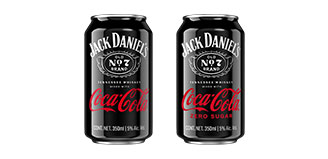

IMAGES
VIDEO
COMMENTS
Coca‑Cola Journey is a dynamic, digital magazine that focuses on universally important topics, social causes and Company news. It will feature original and curated content, and is designed to spark dialogue and tell the story of Coca‑Cola in a creative, refreshing way. "Today, Coca‑Cola is taking its digital communications to a new ...
Coca-Cola History
Launched in November 2012, Coca-Cola Journey is The Coca-Cola Company's dynamic digital magazine and social media-powered hub built to deliver insightful, re...
Coca-Cola Journey, the Company's global digital magazine, sends two millennials on a 21-day cross-country expedition to discover and capture content about its brands and communities. Follow their journey across Instagram, Snapchat, Facebook and Twitter using #JourneyxJourney.
Coca-Cola Journey represents a significant leap forward in how Coke will use digital communications to drive business results and share the Coca-Cola system story with the world. Coca-Cola Journey is a dynamic, digital magazine that focuses on universally important topics, social causes and Company news. It will feature original and curated ...
The Evolution of Coca-Cola's Brand Journalism Journey. At just over 125 years young, The Coca-Cola Company made a decision that its best stories could no longer be contained by traditional communications paths. The press release, while still expected and powerful in certain instances—earnings announcements, for example— is connecting with ...
In her BlogWell Bay Area presentation, The Coca-Cola Company's Manager of Digital Communications and Social Media, Ashley Callahan, shares how the brand's "Coca-Cola Journey" campaign grew its social media channels by 100%. She offers tips on how to create compelling, meaningful content and how to effectively track results through examples of ...
The Coca-Cola Journey starts at the heart of the matter - The Coca-Cola System. Through this, the company prides themselves on creating real magic for their ...
Coca-Cola Journey. 359,984 likes · 45 talking about this. Coca-Cola apoya más de 3.000 proyectos de sostenibilidad a nivel mundial.
Objectives. In November 2012, The Coca-Cola Company reimagined its traditional corporate website with the launch of Coca-Cola Journey, a resource designed to expand the company's commitment to brand-consumer engagement.For the past three years, Journey's digital magazine-style content strategy has managed to unify Coca-Cola's messaging across digital platforms so that what was initially a ...
We now have 30 (and counting!) editions of Coca‑Cola Journey spanning more than 40 countries and published in 20 languages. We invited a few of our talented international editors to join us for a virtual toast to the past, present and future of Coca‑Cola Journey.
Coca-Cola Journey uses video, animated GIFs, and more to champion our culture by bringing more than 700,000 Coca-Cola system employees worldwide — from senior executives to delivery drivers — to the forefront. Telling our stories through the voices of the people behind our global business brings authenticity and a personal touch to our ...
The Coca-Cola Company: Refresh the World. Make a Difference
By Pace Editor | January 5, 2016. It's tough to have a conversation about brand journalism—or brand storytelling—without mentioning Coca-Cola Journey, the cola company's global content hub. According to Jay Moye, the digital magazine's editor-in-chief, Coca-Cola Journey is a destination for smart, fun insightful content.
¡Bienvenidos a Coca-Cola Journey España! Síguenos y comprobarás que Coca-Cola es mucho más que un refresco 😉 bit.ly/CocaColaRGDP
Coca-Cola Journey, Buenos Aires, Argentina. 1,193,668 likes · 2,301 talking about this. Página oficial de Coca-Cola Argentina.
International Leadership Trainee Program
Coca-Cola: The people-first story of a digital transformation
is introduced."Have a Coke and a Smile"1970The Dynamic Ribbon Device, the red‐and‐white graphic representing two. ent contour bottles, is launched nationwide.1971First introduced as a radio ad and later produced as a television commercial, "I'd Like to Buy the World a Coke" becomes an international hit and rem.
Coca-Cola HBC
SUSTAINABILITY - The Coca-Cola Company ... Sustainability
The following message was shared with Coca-Cola HBC employees regarding our operations in Russia. I write to update you on the future shape of our business in Russia. As we indicated in our Q1 trading update, we are making significant changes to our Russian operations in response to the ongoing geopolitical crisis. In close alignment with The ...
The Radzymin Plant Is The Largest Production Facility Owned By Coca‑cola Hbc Poland And Baltics. The Plant Is Also A Manufacturing Centre For The Coca‑cola Hellenic Group. The Products From This Part Of Poland Are Shipped To Various European Countries. Apart From Beverages, The Radzymin Plant Also Produces Pet Bottle Preforms. The Preforms Manufactured In That Plant Supply All Our ...